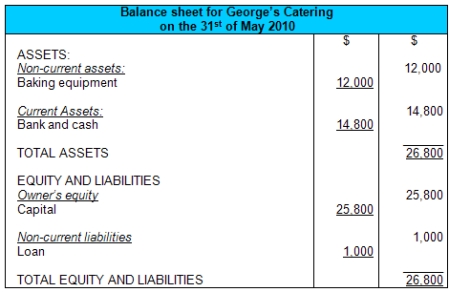
In either case, expect the cost of incorporating to be somewhere between $1,000 and $2,000. The friends and family route is much retained earnings equation – explanation and example less formal than getting a bank loan or capital investment. Some may be willing to put money into your company on an interest-free basis. Don’t go big on business cards, sign writing, marketing materials, cars or inventory before any actual revenue comes in — doing so can create a cash flow blockage. Knowing the state of your financial affairs back to front is one of the best ways to make sure the cash keeps flowing.
Separate your personal and business finances
The SBA helps small business owners who struggle to get approved for other loan programs. Check out our other guides to learn how to set up your finances and create valuable budgets and forecasts. Once you have a business account, it’s important to pay employment contracts for small businesses yourself on a regular basis.
- Managing your business finances is critical to keeping your small business running smoothly and making informed decisions.
- With business loans, you promise to pay investors back with interest over a certain period of time, or when you hit a specific profitability point.
- Once you have a handle on costs and margins, you can leverage a variety of financial services and tools to manage your business funds and cash flow with business banking.
- Plus, your accountant will probably be happier to get tidy business financial statements than a box of receipts at tax time.
- A down payment of 20% is usually required for a small business equipment loan.
Paying yourself regularly gives you a better picture of your business’s overall health, and that can impact your business decisions going forward. Check out common examples and resources to help you calculate, manage, and minimize your starting expenses. Gross profit shows you how much income you’re bringing in on specific items. If your gross profit is low, you might want to consider increasing the price of each item sold. The good old shoebox is a classic trope for receipt and record storage, but it’s not the most effective system.
This guide covers mapping your startup costs, opening a bank account, setting up accounting and payroll, and much more. Bookkeeping is the tracking of a business’s revenue and expenses. It allows you to keep tabs on your company’s financial health and makes your CPA’s job easier come tax time. Basically, bookkeeping involves entering your sales and expenses into a spreadsheet and filing your receipts as a backup. If you need to keep costs low, consider outsourcing to someone who can spend a couple of hours a month reviewing your DIY bookkeeping and providing strategic advice.
Set up accounting and payroll
They can show you if your packaging costs are too high or if you’re overspending on marketing. Generally, you can choose the system that works best for you, but there are exceptions. In the United States, a business is required to use the accrual method if it carries inventory or generates an income of more than $25 million per year. In Canada, any income from self-employment (unless it’s from farming, fishing, or self-employed commission) must be recorded using the accrual method. In this section, we’ll look at three areas integral to keeping your company’s financial health on track.

Build your business credit score
Leasing equipment instead of buying helps you avoid maintenance costs and can also prevent you from overpaying on equipment only needed for a specific period of time. Also, consider renting your office space to make relocation and expansion easier. Many business owners feel intimidated by the financials when writing their business plan. However, it doesn’t require a business degree or types of bank accounts advanced math skills to create accurate financial statements.
Keep in mind you’ll also incur the cost of credit card chargebacks for fraudulent or disputed transactions. Shipping is another key piece of getting your product to customers, and failing to estimate its cost correctly can throw off your budget. Things like size, weight, location, and speed all affect your shipping costs.
Two main types of friend and family investments are equity funding and business loans. In equity funding, you give investors an equity stake in the business. With business loans, you promise to pay investors back with interest over a certain period of time, or when you hit a specific profitability point. Accrual basis accounting is more complex because it tracks revenue when earned and expenses when incurred, regardless of when cash changes hands. For example, if you send an invoice to a client in December 2024 but don’t receive payment until January 2025, then you’d record that income for 2024, not 2025.
The hard costs of the items you’re selling are usually straightforward. For example, if you’re running a hand-printed T-shirt shop, your material costs might be $8 per t-shirt and $3 for ink. Coming up with the right price for your products is an important part of your budget. Here are some of the factors to consider when setting your price.

